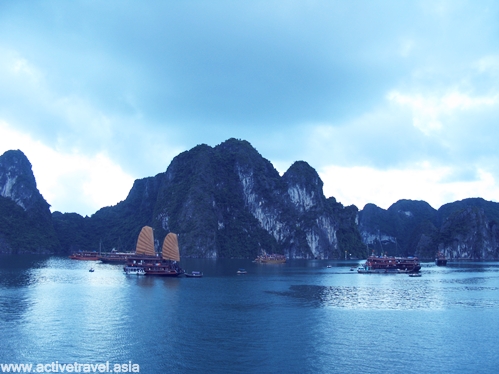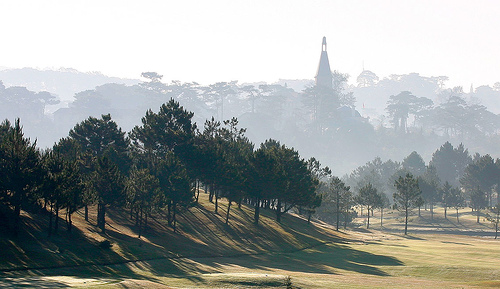Thursday, August 19, 2010
Viajes Indochina kicks off special Viajes Vietnam for honeymoon couples
Viajes Indochina Agency (AVI) is brand name of Spain language market where ACTIVETRAVEL ASIA (a largest and most prestigious tour operator in Vietnam) offers professional travel sevices and holiday package which have been widely accepted by customers primarily in Spain, Mexico, Venezuela.
Feel the love and romance in Vietnam. AVI does everything which makes the couples have a sweet honeymoon vacation
with an unforgettable experience and unique. AVI will arrange Vietnam visa on arrival for couples to have more time to prepare the vacation before arriving Vietnam. The hotels and places AVI has chose are amazing and wonderful to the complete satisfaction of couples and spend some quiet time while enjoying life ....
Roses and chocolates that are inside the room will also be included in the offer, thus helping couples have moments of ecstasy and fulfillment during sweet time in Vietnam.
Couples only send AVI a request or call us at +844-35738569 or Hotline: +84977.311.466 and AVI will do the best to arrange the perfect week honeymoon they have ever had in Vietnam
Agencia de ViajeIndochina (AVI)
#31 callejon 4, calle Dang Van Ngu, Hanoi, Vietnam
Tel: +84-4-3573-8569
Fax: +84-4-3573-8570
Email: info@viajeindochina.com
Skype: viajeindochina
Web : www.viajeindochina.com
Tuesday, August 17, 2010
Life on the Ba Be lake in Vietnam
 Ba Be lake, Bac Kan, Vietnam
Ba Be lake, Bac Kan, Vietnam Kayaking in Ba Be lake, Bac Kan, Vietnam
Kayaking in Ba Be lake, Bac Kan, VietnamThursday, August 12, 2010
Top 5 adventure destinations in Vietnam
According to Bootsnall travel network, there are 5 adventure destinations Vietnam recommended for tourists to travel.
Vietnam seems to be one of the new hotspots in Southeast Asia. Vietnam’s new slogan is “it’s a country, not a war”. Currently Vietnam is experiencing a massive influx of tourists not only interested in it war history, but also interested in the immense amount of soft adventure trips available throughout the country.
Below are a few of our favorites and recommendations:
HALONG BAY
Many of the islands are uninhabited, but some have floating villages of fishermen. Most travelers rent boats and spend multiple days exploring the tiny islands. There are some great caves and inlets to explore. The great way to experience this is on sea kayak, and sleeping in a tent at night, instead of taking the main tourists boats like everybody else.
BACH MA MOUNTAIN
The highest point in Bach Ma National Park, the mountain is only 140 meters above sea level and about 18 miles from the coast. Although the mountain is steep and dense, it makes a good day hike to the top. There are great view on the way.
WESTERN CENTRAL HIGHLANDS
Using Dalat as a starting point, head west toward the border of Cambodia and Laos. If you go far enough west, this is a great way to get somewhere way off the typical Vietnam traveler circuit. This is home to a bunch of ethnic minority villages.
Some traveler’s report that tourists are not welcome, but other report to have truly remarkable experiences.
DALAT
If you don’t have time, energy, or the will power to visit the Western Central Highlands, then the areas around Dalat are perfect for adventure. Dalat is a hill station in the central highland. There are mountain highlands with tiny villages scattered around throughout the area. It makes a fascinating area worth exploring.
There are a number of standard expensive tours you can arrange in the city, but it’s much better to hire your own guide, usually one that approaches you in the streets. Then, you hire a moped, and he will take you to little villages in the middle of bascially nowhere, staying a night or two and having a real cultural experience.
There are some villages in the area that is off limits to tourists – just look for the sign that has a C.
MEKONG DELTA
 Market floating in Mekong Delta, Vietnam
Market floating in Mekong Delta, Vietnam
There are a number of interesting adventures through the Mekong Delta. You can take a boat through some of the rural waterways. Most people hire guides but you can also attempt it on your own. The Mekong Delta is also a fascinating place for cycling. You can get a true glimpse of rural life and interact with locals, although conversations are difficult.
Source: bootsnall
Recommendations for tours in Vietnam:
Kayaking Halong bay 3 days
Biking Adventures Mekong & Centre Highland
Wednesday, August 4, 2010
Vietnam’s Thang Long Imperial Citadel becomes UNESCO heritage
The Imperial Citadel of Thang Long in the capital Hanoi has become UNESCO heritage as the world culture body added this site to its top heritage list in the morning of Sunday (8/1/2010 - Vietnam time).
 Thang Long ancient, Ha noi, Vietnam
Thang Long ancient, Ha noi, Vietnam
The UNESCO World Heritage stamp is a valuable asset for countries as it boosts tourism.
The Thang Long Imperial Citadel was first discovered in late 2002 during excavation work to build a new national assembly on Hoang Dieu Street, Hanoi.
Thang Long Citadel was part of a citadel system built in the 11th century that included the Dai La Citadel, which acted as a defensive rampart with a complete dyke system, and the Forbidden City, where the king and his royal family lived.
Vietnam is this year celebrating 1,000 year-old culture of Thang Long-Hanoi.
Vietnam has nine things in the UNESCO heritage list. The cultural and natural tangible heritage sites are Hue Ancient Capital City (1993), Ha Long Bay (recognized twice in 1994 and 2000 as natural and geological heritages), Hoi An Ancient Town (1999), My Son Holy Land (1999), and Phong Nha-Ke Bang National Park (2003).
Intangible heritage includes Hue royal court music (2003), Central Highlands gong cultural space (2005), Bac Ninh love duet and Ca Tru (2009).
Source: sgpdaily
Recommendation in Hanoi, Vietnam:
Hanoi travel information
Hanoi tours





